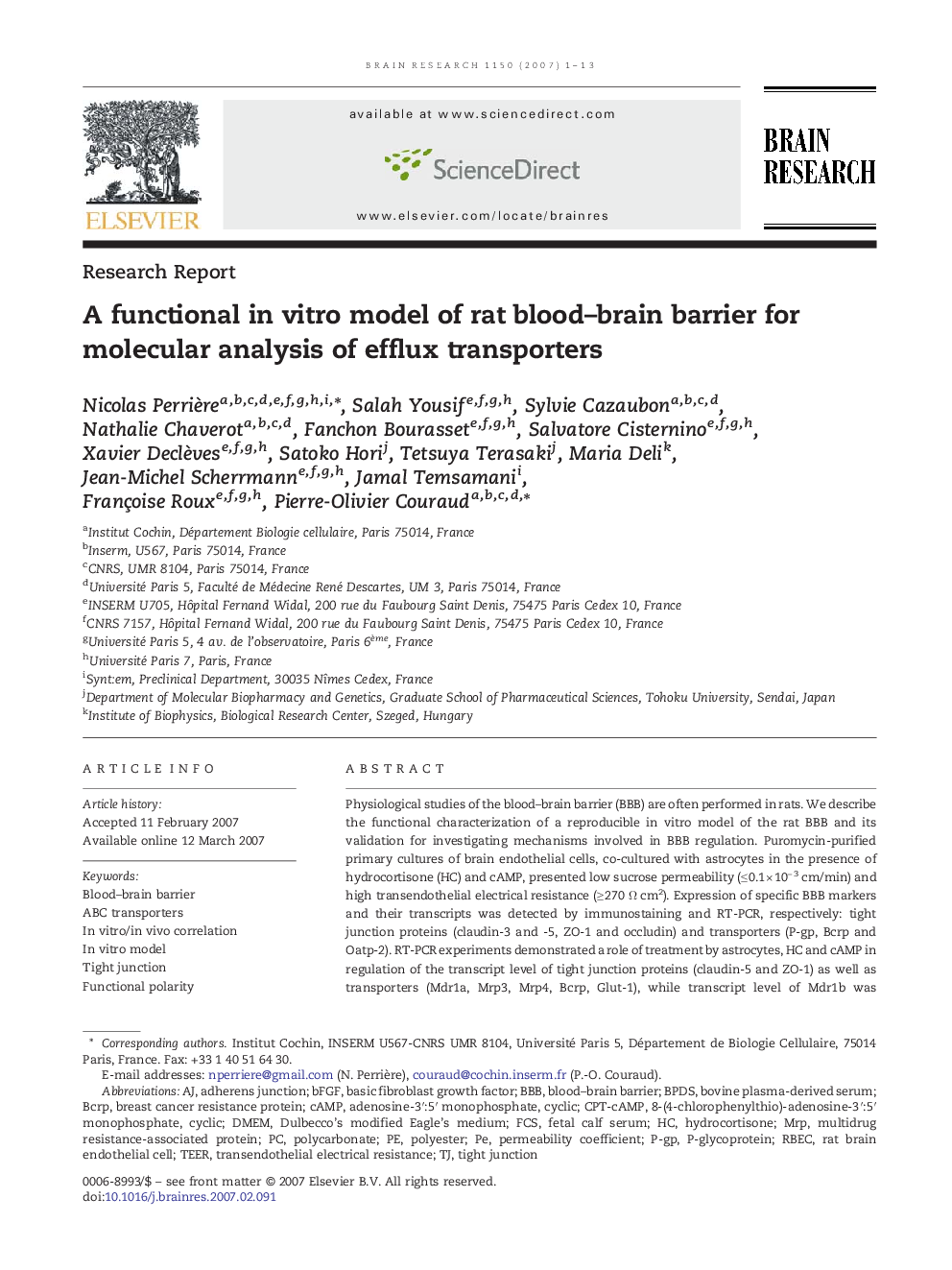| Article ID | Journal | Published Year | Pages | File Type |
|---|---|---|---|---|
| 4331011 | Brain Research | 2007 | 13 Pages |
Physiological studies of the blood–brain barrier (BBB) are often performed in rats. We describe the functional characterization of a reproducible in vitro model of the rat BBB and its validation for investigating mechanisms involved in BBB regulation. Puromycin-purified primary cultures of brain endothelial cells, co-cultured with astrocytes in the presence of hydrocortisone (HC) and cAMP, presented low sucrose permeability (≤ 0.1 × 10− 3 cm/min) and high transendothelial electrical resistance (≥ 270 Ω cm2). Expression of specific BBB markers and their transcripts was detected by immunostaining and RT-PCR, respectively: tight junction proteins (claudin-3 and -5, ZO-1 and occludin) and transporters (P-gp, Bcrp and Oatp-2). RT-PCR experiments demonstrated a role of treatment by astrocytes, HC and cAMP in regulation of the transcript level of tight junction proteins (claudin-5 and ZO-1) as well as transporters (Mdr1a, Mrp3, Mrp4, Bcrp, Glut-1), while transcript level of Mdr1b was significantly decreased. The functionality of efflux pumps (P-gp, Mrps and Bcrp) was demonstrated in the presence of specific inhibitors (PSC833, MK571 or Ko143, respectively) by (i) assessing the uptake of the common substrates rhodamine 123 and daunorubicin and (ii) evaluating apical to basolateral and basolateral to apical polarized transport of daunorubicin. In addition, a good correlation (R = 0.94) was obtained between the permeability coefficients of a series of compounds of various lipophilicity and their corresponding in vivo rodent blood–brain transfer coefficients. Taken together, our results provide compelling evidence that puromycin-purified rat brain endothelial cells constitute a reliable model of the rat BBB for physiological and pharmacological characterization of BBB transporters.
